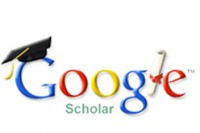Characteristics of Effective English Teacher for Millenials
DOI:
https://doi.org/10.18196/ftl.v6i2.11549Keywords:
Millennial era, effective teachers, characteristicsAbstract
The millennial era is an era of digital technology in which people are close to technology and have instant access to information. This study investigated students' perception of the characteristics of an effective English language teacher in the millennial era. This study used a qualitative approach and used a descriptive qualitative design and took place at a private university in Yogyakarta. The participants were four students of the English Language Education Department (ELED) batch 2016. In collecting the data, the researcher interviewed the participant. The findings showed that in socio-affective skills, an effective English language teacher in the millennial era should enhance students' motivation to learn, create a good classroom atmosphere, have good relationships with the students and other teachers, and understand students' character. In pedagogical knowledge, an effective English language teacher should give feedback, have a valuable ability to explain the lesson, ensure students' understanding of the lesson. They also should have a lesson plan, utilize and apply technology, allow students to write a reflection, and control class activities. In knowledge subject matter, an effective English language teacher should be knowledgeable and master English well. Lastly, an effective English language teacher should have personality traits such as intelligent, caring, friendly, disciplined, creative, kind, patient, humorous, responsible, open-minded, and professional. The findings implied that to teach students in the millennial era effectively, teachers should possess and maintain the characteristics of an effective English language teacher.References
Arikan, A. (2010). Effective English language teacher from the perspectives of prospective and in-service teachers in Turkey. Electronic Journal of Social Sciences, 9 (31), 209-223.
Retrieved from https://dergipark.org.tr/en/download/article-file/70171
Arikan, A., Taser, D., & Sarac-suzer, H. S. (2008). The effective English language teacher from the perspectives of Turkish Preparatory school students. Education and Science, 33 (150), 42-52. Retrieved from https://eric.ed.gov/?id=ED506217
Broadbridge, A. M., Maxwell, G. A., & Ogden, S. M. (2007). Experiences, perceptions, and expectations of retail employment for generation Y. Career Development International,
(6),523-544. https://doi.org/10.1108/13620430710822001
Bt Rahamat, R., Shah, P. M., Bt Din, & Bt Abd Aziz, J. (2011). Students' readiness and perceptions towards using mobile technologies for learning the English language literature component. The English Teacher, 69-84. Retrieved from http://www.assumptionjournal.au.edu/index.php/newEnglishTeacher/issue/view/229
Chun, D., Smith, B., & Kern, R. (2016). Technology in language use, language teaching, and language learning. The Modern Language Journal, 100, 64-80. https://doi.org/10.1111/modl.12302
Cohen, L., Manion, L., & Morrison, K. (2011). Research methods in education. 7th ed. London: Routledge
Considine, D., Horton, J., & Moorman, G. (2009). Teaching and Reaching the Millennial Generation Through Media Literacy. Journal of Adolescent & Adult Literacy, 52 (6),471-481. https://doi.org/10.1598/JAAL.52.6.2
Creswell, J. W. (2002). Educational research: Planning, conducting, and evaluating quantitative (p. 676). Upper Saddle River, NJ: Prentice-Hall.
Creswell, J. W. (2012). Educational research: Planning, conducting, and evaluating quantitative research. 4th Edition. Boston: Pearson, ch.1, p. 2-28.
DeBard, R. (2004). Millennials coming to college. New Directions for Student Services,106, 33-45. https://doi.org/10.1002/ss.123
Dincer, A., Goksu, A., Takkac, A., & Yazici, M. (2013). Common characteristics of an effective English language teacher. The International Journal of Educational Researchers (IJERs), 4-3, 1-8.
Retrieved from https://ijer.penpublishing.net/makale/70
Flores, J. F. F. (2015). Using gamification to enhance second language learning. Digital Education, (27), 32-54. https://doi.org/10.1344/der.2015.27.32-54
Goddard, R. D., Hoy, W. K., & Hoy, A. W. (2000). Collective teacher efficacy: Its meaning, measure, and impact on student’s achievement. American Educational Research Journal, 37(2), 479-507. https://doi.org/10.3102/00028312037002479
Harper, C. A., & Jong, E. J. D. (2009). English language teacher expertise: the elephant in the room. Language and Education, 23 (2), 137-151. https://doi.org/10.1080/09500780802152788
Haryadi, D. (2018). University teachers; beliefs about the characteristics of effective English as a foreign language (EFL) teachers, [Thesis, Universitas Muhammadiyah Yogyakarta] Bantul. http://repository.umy.ac.id/bitstream/handle/123456789/20183/1.%20Judul.pdf?sequence=1
Ismail, M., & Lu, H. S. (2014). Cultural Values and Career Goals of the Millennial Generation: An Integrated Conceptual Framework. The Journal of International Management Studies,9 (1), 38-49.
Retrieved from http://www.jimsjournal.org/4%20Maimunah%20Ismail.pdf
Kaifi, B.A., Nafei, W. A., Khanfar, N. M., & Kaifi, M. M. (2012). A multi-generational workforce: managing and understanding millennials. International Journal of Business & Management, 7 (24), 88-93. http://dx.doi.org/10.5539/ijbm.v7n24p88
Kelan, E., & Lehnert, M. (2009). The millennial generation: generation Y and the opportunities for a globalized, networked, educational system. Beyond Current Horizons, 1-12.
https://doi.org/10.1.1.596.8701
Korkmaz, S. C., & Yavuz, A. (2011). ELT student-teacher perspectives of an effective English language teacher. Journal of Theory and Practice in Education, 7 (2), 207-229.
Retrieved from https://dergipark.org.tr/en/download/article-file/63245
Kraus, S. & Sears, S. (2008). Teaching for the millennial generation: Student and teacher perceptions of community building and individual pedagogical techniques. The Journal of Effective Teaching (JET), 8 (2), 32-39.
Retrieved from https://uncw.edu/jet/articles/vol8_2/kraus.pdf
Mercadante, F. (2008). The Millennial Generation, Postmodernism & the Changing Face of Catholic Youth Ministry. Center for Ministry Development, 1-13.
Retrieved from https://garyoyya.angelfire.com/changingfaceofym.pdf
Monaco, M., & Martin, M. (2007). The Millennial Student: A New Generation of Learners. Athletic Training Education Journal, 42-46.
https://doi.org/10.4085/1947-380X-2.2.42
Nicholas, A. (2008). Preferred Learning Methods of the Millennial Generation. Digital Commond @ Salve Regina.
Retrieved from https://digitalcommons.salve.edu/fac_staff_pub/18/
Olszewski, P. (2016). Teaching millennials how to study under 〖the 21〗^stcentury sky. Pyrex Journal of Educational Research and Reviews, 2 (1), 001-009.
Retrieved from http://www.pyrexjournals.org/pjerr
Payne, E. K., & Berry, D. C. (2011). Connecting With Your Students in the Year 2011: Text Messaging in the Classroom. Athletic Training Education Journal, 6 (3), 175-178.
https://doi.org/10.4085/1947-380X-6.3.175
Phillips, C. R., & Trainor, J. E. (2014). Millennial students and the flipped classroom. ASBBS, 21 (1), 519-530.
Retrieved from http://asbbs.org/files/ASBBS2014/PDF/P/Phillips_Trainor(P519-530).pdf
Pierson, M. E., & McNeil, S. (2000). Preservice technology integration through collaborative action communities. Contemporary Issues in Technology and Teacher Education, 1 (1), 189-199.
Retrieved from https://www.learntechlib.org/primary/p/10808/
Pinder-Grover, T., & Groscurth, C. R. (2009). Principles for Teaching the Millennial Generation: Innovative Practices of U-M Faculty. Center for Research and Learning and Teaching, 26.
Retrieved from https://www.researchgate.net/publication/237593593
Prensky, M. (2001). Digital natives digital immigrants. On the Horizon, 9 (5), 1-6.
https://doi.org/10.1108/10748120110424816
Puji, R.P.N., & Umamah, N. (2018). Edmodo Multimedia: Supporting Technology for Media Learning at Higher Education. International Journal of English Literature and Social sciences, 3 (1), 48-56.
https://dx.doi.org/10.22161/ijels.3.1.9
Rotgans, J. I., & Schmidt, H.G. (2011). The role of teachers in facilitating situational interest in an active-learning classroom. Teaching and Teacher Education, 27, 37-42.
https://doi.org/10.1016/j.tate.2010.06.025
Shishavan, B.H., & Sadeghi, K. (2009). Characteristics of an Effective English Language Teacher as perceived by Iranian Teachers and Learners of English. English Language Teaching, 2(4), 130-143.
https://doi.org/10.5539/elt.v2n4p130
Shishavan, H.B. (2010). The relationship between Iranian English language teachers' and learners' gender and their perceptions of an effective English language teacher. English Language Teaching, 3 (3), 3-10. https://doi.org/10.5539/elt.v3n3p3
Taylor, A. (2012). A Study of the Information search behavior of the millennial generation. Information Research, 17 (1). Retrieved from http://informationr.net/ir/17-1/paper508.html
Thakre, S. S, & Thakre, S. B. (2015). Perception of medical students for the utility of mobile technology use in medical education. International Journal of Medicine and Public Health, 5 (4). 305-311. https://doi.org/10.4103/2230-8598.165959
Twenge, J. M. (2010). A review of the empirical evidence on generational differences work attitudes. Journal of Business and Psychology, 25, 201-210. https://doi.org/10.1007/s10869-010-9165-6
Walker, R. (2008). Twelve characteristics of an effective teacher: A longitudinal, qualitative, quasi-research study of in-service and pre-service teachers’ opinions. Educational Horizons, 87(1), 61-68. Retrieved from http://www.jstor.org/stable/42923744
Downloads
Published
How to Cite
Issue
Section
License
Copyright
Authors retain copyright and grant the journal right of first publication with the work simultaneously licensed under a Creative Commons Attribution-ShareAlike 4.0 International License that allows others to share the work with an acknowledgment of initial publication in this journal.
Authors are permitted and encouraged to post their work online (e.g., in institutional repositories, social media account, or on their website) after the article getting published in the journal, as it can lead to productive exchanges and earlier and greater citation of published work (See The Effect of Open Access).License
You are free to:
- Share — copy and redistribute the material in any medium or format
- Adapt — remix, transform, and build upon the material for any purpose, even commercially.
Attribution — You must give appropriate credit, provide a link to the license, and indicate if changes were made. You may do so in any reasonable manner, but not in any way that suggests the licensor endorses you or your use.
ShareAlike — If you remix, transform, or build upon the material, you must distribute your contributions under the same license as the original.
- No additional restrictions — You may not apply legal terms or technological measures that legally restrict others from doing anything the license permits.


.png)





